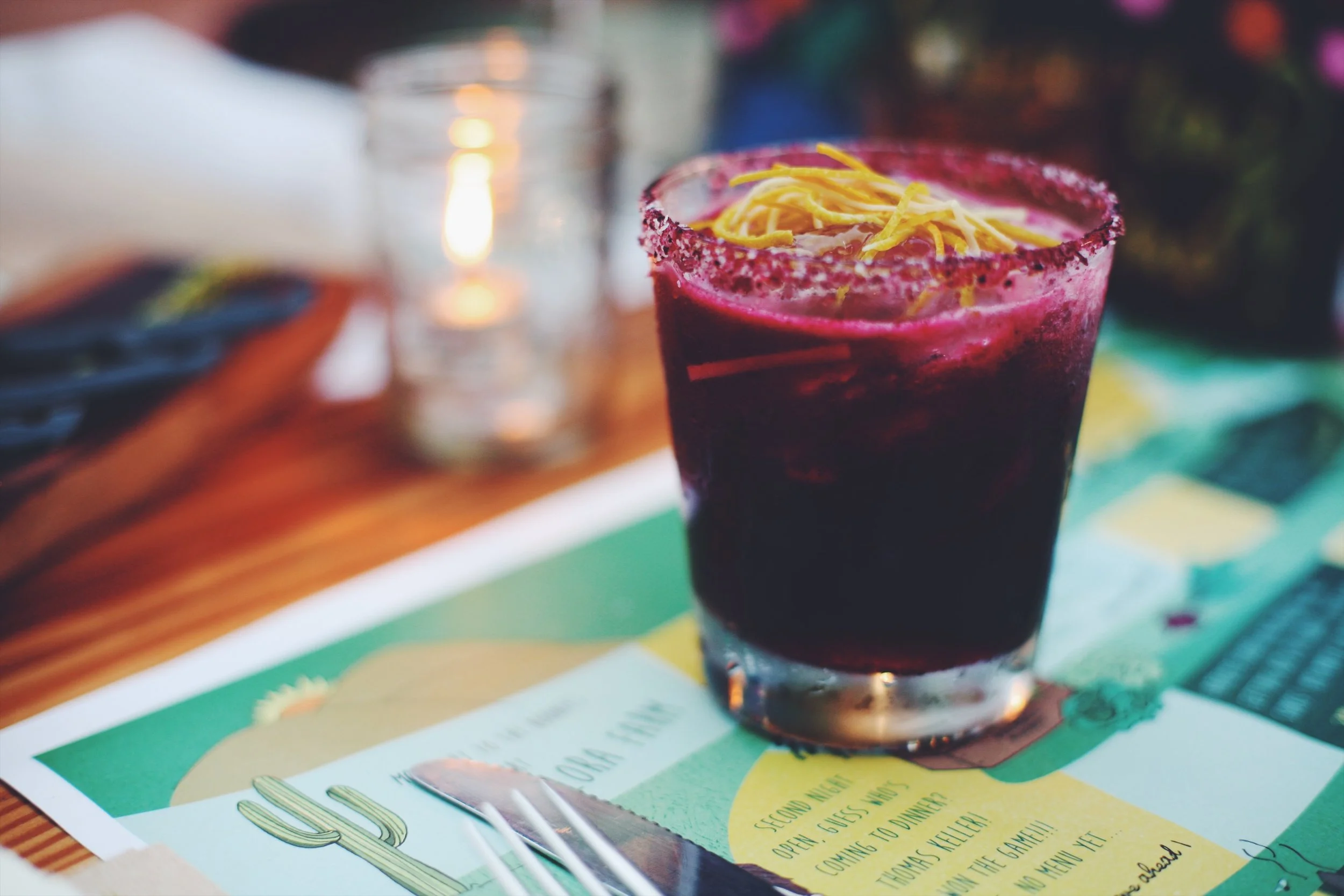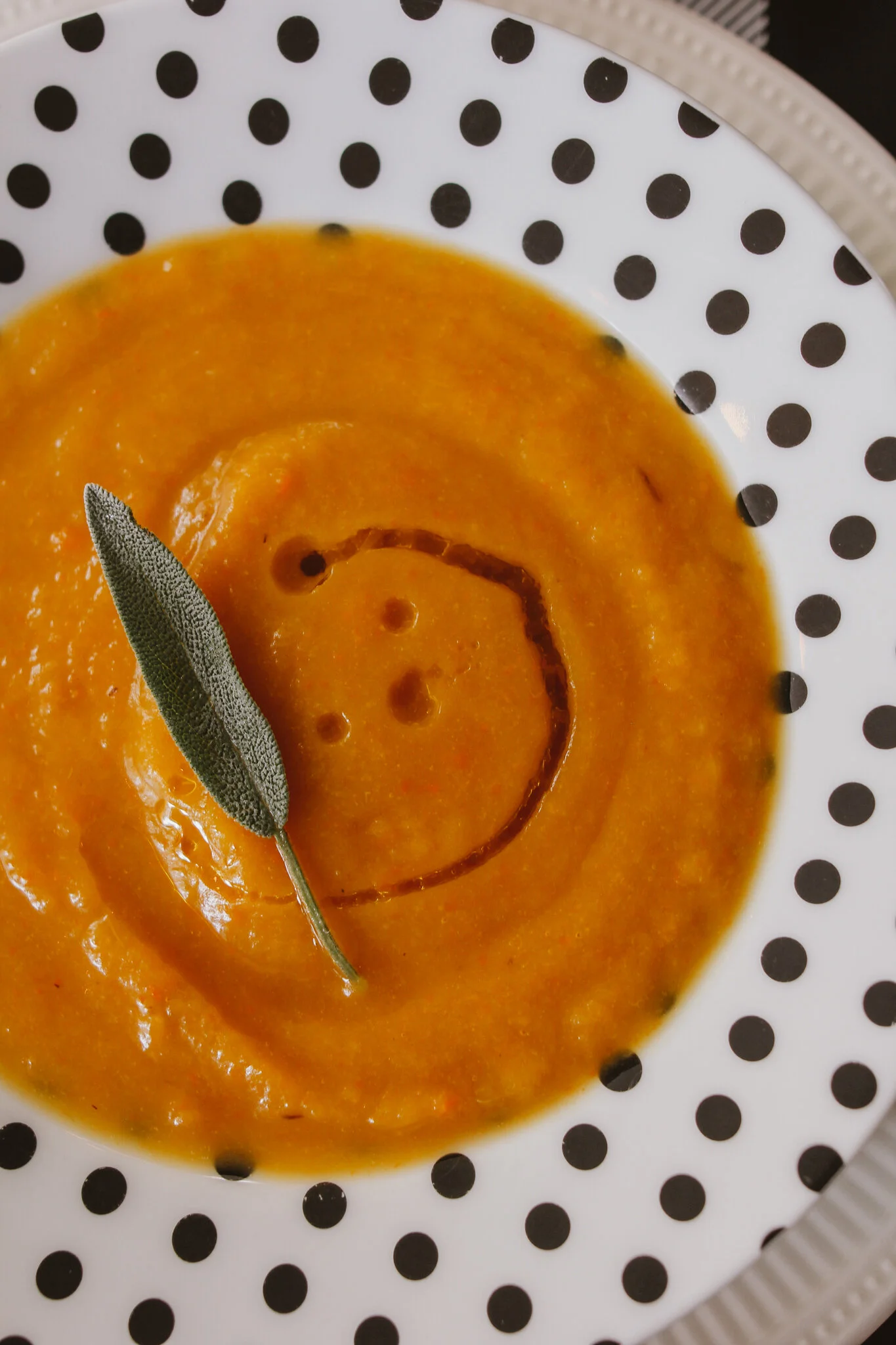We have an open-door/drop-in party on Halloween, with Martha Stewart’s Pumpkin Soup recipe on the stove to serve people until it’s gone. Typically, my husband’s friends run in to slurp a little soup while their kids circle the block for candy and come back to get them. I’ve served this soup so many times that the page in the cookbook is filled with dates and notes and splatters of orange.
A little fun fact about my cookbooks: I always write the date and occasion that I have made the recipe, including what was going on in the world and our life that day. Do you write notes in your recipe books or on your recipes? Which one has the most notes written on it?
I’ve been thinking a lot lately about what recipes I like the most and how they are written. I’ve noticed that recipes are evolving far from what our grandmothers read in their Betty Crocker books—and, honestly, I don’t know if I like it. Betty wrote with the assumption that her readers didn’t know how to cook AT ALL. Directions were very detailed and didn’t give room for nuance or personal taste. Today, blogs are filled with recipes that suggest certain ingredients, leave a lot of room for personal taste, and assume the reader knows how to—and loves to—cook. My friend Kathy keeps telling me that this doesn’t work for her! What about you? I refute the claim that people are cooking and understand cooking as much as modern recipes assume. I don’t like to make a recipe and have it turn out differently from my neighbor, who followed the directions as carefully as I did. So, my recipes are going to be very detailed! Does that make me Betty Crocker? I know that it DOES make sure that you whip the eggs with the sugar for the same amount of time that I do, assuring both of us that our cookies won’t be dry and that they have the same consistency.
Returning to the pumpkin soup we serve at Halloween: In MY version of Martha’s recipe, I roast the pumpkins before adding them to the pot of soup. If you were told to “add cooked pumpkin to the soup,” how would you know that after 50 times making this soup, I have found that pre-roasting the pumpkin makes it taste best? Although this recipe is an adaptation of a classic, I have changed it enough to publish it here and claim it as a version not my own but worth adding to this site. With all the changes made, it truly is a great version of a great soup.
Pumpkin Soup
Serves 8
2 tablespoons olive oil (I love Thrive Market brand)
1 large onion, finely chopped
1 leek, trimmed, cleaned, and sliced thin
2 shallots, finely chopped
2 pounds pumpkin, cut into 4 pieces and roasted until flesh scoops off skin easily (or use 2 cans pureed pumpkin)
2 ripe pears, peeled, cored, and cut into chunks
3 carrots, peeled and cut into small pieces
6 cups chicken or vegetable stock
9 sprigs of fresh thyme
½ cup half-and-half (optional)
Coarse kosher salt and freshly ground black pepper
6 sage leaves
½ cup sour cream (optional)
In a heavy-bottomed soup pot over medium heat, melt the butter. Add the onion, leek, and shallots. Sauté until tender but not brown, about 5 to 7 minutes.
Add pears and carrots, the pumpkin, stock, and three thyme sprigs. Cover; simmer for 30 minutes, until vegetables are tender.
Remove thyme sprigs and discard. Purée the soup in batches in a food processor.
Return the soup to the pot and add the half-and-half if using.
Season to taste and heat gently; do not boil.
Ladle the soup into individual bowls. Garnish with sage leaves, thyme sprigs, and an optional dollop of sour cream.
Adapted from The Martha Stewart Cookbook, 1995.
Find more great food recipes in my second book, Lark Parties! #livinglark
Purchase Lark Parties, which features dozens of recipes just like this one!

